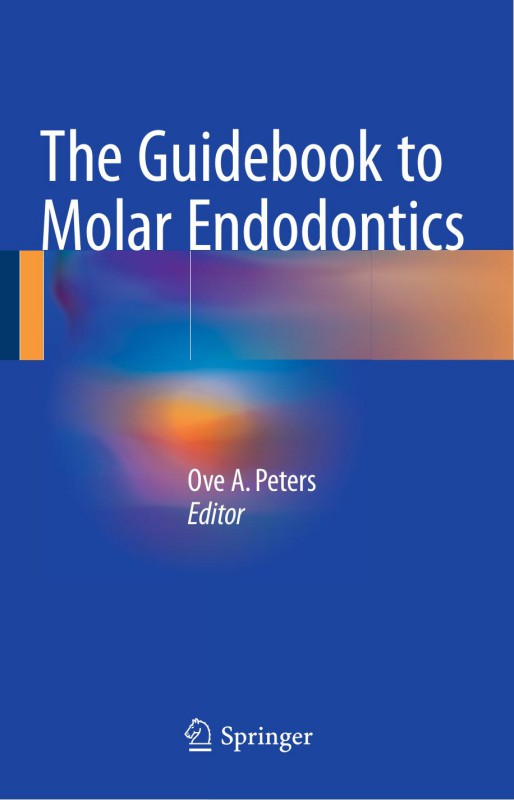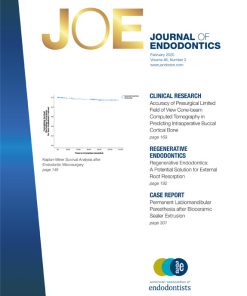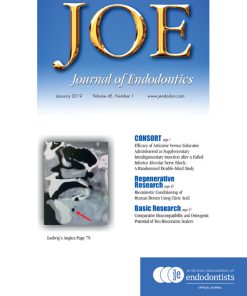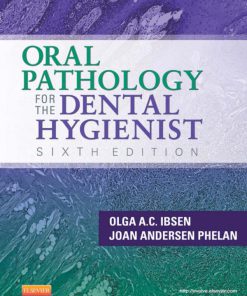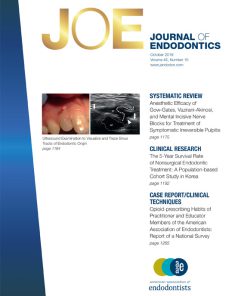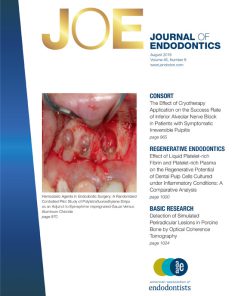The Guidebook to Molar Endodontics 1st Edition by Ove Peters ISBN 3662529017 9783662529010
$50.00 Original price was: $50.00.$25.00Current price is: $25.00.
Authors:The Guidebook to Molar Endodontics-Springer-Verlag Berlin Heidelberg (2017) , Author sort:Heidelberg, The Guidebook to Molar Endodontics-Springer-Verlag Berlin , Published:Published:Nov 2016
The Guidebook to Molar Endodontics 1st Edition by Ove A. Peters – Ebook PDF Instant Download/Delivery. 3662529017, 9783662529010
Full download The Guidebook to Molar Endodontics 1st Edition after payment
Product details:
ISBN 10: 3662529017
ISBN 13: 9783662529010
Author: Ove A. Peters
The Guidebook to Molar Endodontics 1st Edition : This volume offers readers a pragmatic approach to endodontic therapy for permanent molars, based on up-to-date evidence. All chapters were written by experts in the field, and focus on preparation for treatment, vital pulp therapy, access cavity preparation, root canal shaping, outcome assessment, retreatment, apical surgery, and specific aspects of restorations for root canal-treated molars. The role of micro-CT data in visualizing canal anatomy is compared to cone beam CT, and detailed information on current clinical tools, such as irrigation adjuncts and engine-driven preparation tools is provided. Important steps are illustrated in clinical photographs and radiographs, as well as by schematic diagrams. Tables and check boxes highlight key points for special attention, and clinical pitfalls. Guiding references are provided. Performing molar endodontics is often a daunting prospect, regardless of the practice setting. This is where “Molar Endodontics” is an ideal source of guidance for practitioners. Special devices and recent innovations in apex locators and nickel-titanium instruments have, however, made procedures significantly easier and more practical for non-specialists. This book will help conscientious clinicians to master molar endodontics with well-described and established clinical methods.
The Guidebook to Molar Endodontics 1st Edition Table of contents:
1: Molar Root Canal Anatomy
1.1 Introduction
1.2 Components of the Root Canal System and Classifications
1.3 Complexity of Root Canal Systems
1.4 The Anatomy of Maxillary Molars
1.5 The Anatomy of Mandibular Molars
1.5.1 Additional Roots in Mandibular Molars
1.5.2 Additional Root Canals
1.5.3 Middle Mesial Root Canals
1.5.4 Middle Distal Root Canals
1.5.5 Accessory, Lateral Canals, and Apical Ramifications
1.5.6 C-Shaped Canal Systems
1.5.7 Isthmi and Intracanal Communications
2: Diagnosis in Molar Endodontics
2.1 Introduction
2.2 Patient Interview
2.3 Chief Complaint
2.4 History of the Chief Complaint
2.5 Dental History
2.6 Medical History
2.7 Odontogenic Versus Non-odontogenic Pain
2.8 Common Source of Non-odontogenic Toothache
2.8.1 Muscular
2.8.2 Sinus or Nasal Structures
2.8.3 Neurovascular
2.8.4 Neural
2.8.5 Cardiac
2.8.6 Neoplasia
2.8.7 Non-somatoform
2.9 Clinical Exam
2.9.1 Extraoral Exam (Box 2.3)
2.9.2 Intraoral Exam (Box 2.4)
2.10 Restorability
2.11 Endodontic–Periodontic Relationship
2.12 Sinus Tract
2.13 Diagnostic Tests
2.14 Sensibility Testing: Pulpal Testing
2.15 Thermal Testing
2.15.1 Cold
2.15.2 Heat
2.16 Electrical Pulp Test
2.17 Pulpal Testing Accuracy
2.18 Periradicular Tests
2.18.1 Percussion
2.18.2 Biting
2.19 Imaging: Radiography
2.19.1 Radiolucent Variations
2.19.2 Radiopaque Variations
2.19.3 Children
2.20 Pulpal Diagnostic Categories (Boxes 2.5 and 2.6)
2.20.1 Normal
2.21 Periradicular Diagnostic Categories (Box 2.7)
2.21.1 Normal
2.22 Cracked/Fractured Teeth
2.23 Craze Lines
2.24 Fractured Cusp
2.25 Cracked Tooth
2.26 Split Tooth
2.27 Vertical Root Fracture
2.28 Vertical Root Fracture Versus Advanced Crack
2.29 Tooth Resorption
2.30 Internal Resorption
2.31 External Resorption
2.32 External Surface Resorption
2.33 External Inflammatory Root Resorption
2.34 Ankylosis
3: Local Anesthesia
3.1 Introduction
3.2 Topical Anesthesia
3.3 Mandibular Anesthesia
3.3.1 Block Technique
3.3.2 Local Anesthetic Compounds for Mandibular Anesthesia
3.4 Maxillary Anesthesia
3.4.1 Maxillary Technique
3.4.2 Local Anesthetic Compounds for Maxillary Anesthesia
3.5 Determining Pulpal Anesthesia Prior to Initiating Treatment
3.6 Supplemental Anesthetic Techniques
3.7 Preemptive Strategies to Improve Success of the IANB Injection
3.8 Mandibular Buccal Infiltration Injection with Articaine
3.9 Intraligamentary (PDL) Injection
3.10 Intraosseous Injection (IO)
3.11 Intrapulpal Injection
3.12 Checklist for Anesthesia in Endodontics
4: Vital Pulp Therapy for Permanent Molars
4.1 Introduction
4.2 The Benefit of Having a Vital Pulp
4.2.1 Apexogenesis
4.2.2 Tertiary Dentinogenesis
4.2.3 Inflammation and Tertiary Dentin
4.3 Clinical Evaluation of Inflammation
4.4 Indications and Treatment Concepts for Vital Pulp Therapy
4.4.1 Direct Pulp Capping Class I (Accidental Pulp Exposure)
4.4.2 Direct Pulp Capping Class II (Intentional Pulp Exposure)
4.4.3 “Partial” Pulpotomy
4.4.4 “Full” Pulpotomy
4.4.5 “Emergency” Pulpotomy
4.5 Brief Comments on Capping Agents
4.6 Treatment Guidelines for Vital Pulp Therapy in Molars
4.6.1 Direct Pulp Capping Class I
4.6.2 Direct Pulp Capping “Class II” and “Partial Pulpotomy”
4.6.3 “Full” Pulpotomy for Children and Adolescents
4.6.4 Indications for Indirect Pulp Therapy
4.6.5 Stepwise Exaction (2-Step Approach)
4.7 Factors Controlling Prognosis
4.8 The Indications for Vital Pulp Therapy May Change Over Time
4.9 Summary
5: Molar Access
5.1 Introduction
5.2 General Considerations Prior to Endodontic Access in Molars
5.2.1 Accessing Maxillary First Molars
5.2.2 Maxillary Second Molars
5.2.3 Mandibular First Molars
5.2.4 Mandibular Second Molars
5.2.5 Third Molars
5.3 Access Through Existing Full Coverage Restorations
6: Shaping, Disinfection, and Obturation for Molars
6.1 Introduction
6.2 Shaping the Molar Root Canal System
6.2.1 Step 1: Analysis of the Specific Anatomy of the Case
6.2.2 Step 2: Canal Scouting
6.2.3 Step 3: Coronal Modifications
6.2.4 Step 4: Negotiation to Patency
6.2.5 Step 5: Determination of Working Length
6.2.6 Step 6: Glide Path Preparation
6.2.7 Step 7: Root Canal Shaping to Desired Size
6.2.8 Step 8: Gauging the Foramen, Apical Adjustment
6.3 Debridement of the Molar Root Canal System
6.3.1 Step 1: Achieve an Appropriate Apical Size
6.3.2 Step 2: Select Efficient Antimicrobial Solutions and Medicaments
6.3.3 Step 3: Maintain Irrigant in Extended Contact with Radicular Walls
6.3.4 Step 4: Perform Activated Irrigation
6.3.5 Step 4: Manage Smear Layer
6.3.6 Step 5: Consider Accessory Anatomy
6.4 Obturation of the Molar Root Canal Systems
6.4.1 Step 1: Choosing a Technique and Timing the Obturation
6.4.2 Step 2: Selection of Master Cones
6.4.3 Step 3: Canal Drying and Sealer Application
6.4.4 Step 4: Filling the Apical Portion (Lateral or Vertical Compaction)
6.4.5 Step 5: Completing the Fill
6.4.6 Step 6: Quality Criteria After Obturation
6.5 Special Considerations for Different Canal Configurations
6.5.1 Cases With Relatively Low Complexity
6.5.2 Cases With Moderate Complexity
6.5.3 Cases with High Complexity, Including Challenging S-Curves
7: Considerations for the Restoration of Endodontically Treated Molars
7.1 Introduction
7.2 Questions That Arise in Daily Practice
7.3 Molar Restoration in an Era of Adhesive Dentistry, Digital Technology, and Biomaterials
7.4 Objectives of the Restoration of Endodontically Treated Teeth
7.5 Fluid-Tight Seal of the Root Canal System
7.6 The Ferrule Effect in Molars
7.7 Post Placement in Endodontically Treated Molars
7.8 Bonding in the Root Canal: The Worst-Case Scenario
7.8.1 Do Posts Reinforce Endodontically Treated Molars?
7.8.2 Do Posts Increase Restoration Retention?
7.9 A New Treatment Option: The Endocrown
7.10 Placement of Full Crowns After Molar Endodontics: Clinical Data and Study Biases
7.11 The Relevance of Cuspal Coverage
7.12 Direct or Indirect Restoration: Selection of Material and Clinical Procedures
7.13 Restoration Repair: A Rational Strategy
7.14 Restoration of endodontically treated molars as part of multi-unit restorations
8: The Outcome of Endodontic Treatment
8.1 Introduction
8.2 Prognosis
8.2.1 The Scientific Basis for Statements Concerning Prognosis
8.2.2 Statements About Prognosis in Endodontics
8.3 Natural History of Disease
8.4 Clinical Course
8.5 Vital Pulp Therapies
8.5.1 Caries in Primary Dentin
8.5.2 Deep Caries
8.5.3 Pulp Exposure
8.5.4 Symptomatic Pulpitis
8.6 Treatment of Pulp Necrosis and Apical Periodontitis
8.6.1 Pulp Necrosis and Asymptomatic Apical Periodontitis
8.6.2 Symptomatic Apical Periodontitis
8.6.3 Successful Outcome of Root Canal Treatment
8.6.4 Unsuccessful Outcome of Root Canal Treatment
8.6.5 Asymptomatic and Functional but Persisting Radiological Signs of Apical Periodontitis
8.6.6 Uncertainties in Classifying the Outcome into “Success” and “Failure”
8.6.7 Tooth Retention Over Time
8.7 Retreatment
8.7.1 Surgical or Nonsurgical Retreatment
8.7.2 The Size of the Bone Destruction
8.7.3 The Technical Quality of the Previous Treatment
8.7.4 Accessibility to the Root Canal
8.7.5 Future Restorative Requirements of the Tooth
8.7.6 The Cost of Treatment
8.7.7 The Preferences of the Clinician and the Patient
8.7.8 Modern Times: Improved Outcomes
8.7.9 Endodontic Retreatment: Need for Research
8.8 Conclusion
9: Nonsurgical Root Canal Retreatment
9.1 Introduction
9.2 Definition of Root Canal Retreatment
9.2.1 The Rationale for Retreatment
9.3 Clinical Practice of Root Canal Retreatment
9.3.1 Removal of Filling Material
9.3.2 Pastes
9.3.3 Sealers
9.4 Perforation Repair
10: Endodontic Microsurgery for Molars
10.1 Introduction
10.2 Rationale for Endodontic Microsurgery
10.3 Diagnostic Steps Before Endodontic Microsurgery
10.4 Endodontic Microsurgery Step by Step
10.5 Bone Defect Classification
10.6 Intentional Replanation
People also search for The Guidebook to Molar Endodontics 1st Edition :
molar endo tips
preparing tooth for root canal
what is dental endodontics
endodontic guide
molar endodontic therapy
endodontic tips and tricks
You may also like…
eBook PDF
British Further Education A Critical Textbook 1st Edition by Peters ISBN 9781483154855 1483154858

